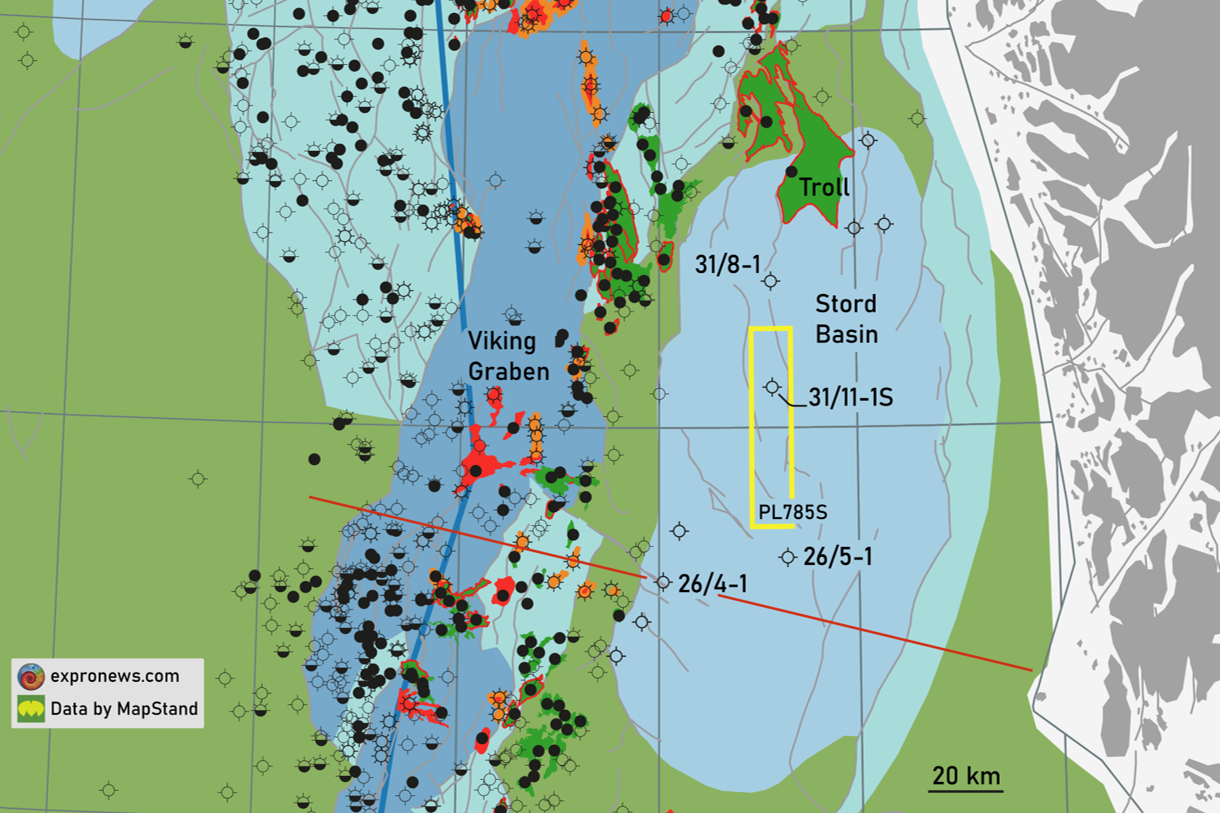As reported by the NPD today, the drilling of 31/11-1S has now been concluded with a dry well as a result. The well can be seen as a courageous attempt to prove hydrocarbons in the Stord Basin, which is mostly known for the supposed lack of generation. However, with only a handful of wells having been drilled to date, the Stovegolvet well must be seen as a very useful test of the basin’s potential. Whether or not the post-well analysis of 31/11-1S will also point in the direction of a lack of source rock maturity is yet unknown, but fact is that the reservoir targets were found.

The well was not only closely watched because of the exciting test of the Stord Basin, Equinor also decided to temporarily suspend the well when it has just been spudded. The rig was moved to drill the Apodida prospect north of Troll, only to come back to Stovegolvet after completing Apodida. Rumours are (reported by Norwegian website Energi24) that Equinor did a last minute remapping of the Stovegolvet closure and concluded that if the prospect was hydrocarbon bearing, the volumes could be much bigger than originally anticipated. This possibly meant the need to carry out a revision of the well design and drilling programme, which obviously needed time.
Unfortunately, the results were not as they were hoped for, even though all the targeted Jurassic and Triassic reservoirs were found. As mentioned by the press release, the well was also partly drilled to investigate the potential of the area for CO2 injection, so there may still be potential for the area in terms of carbon storage.
HENK KOMBRINK




